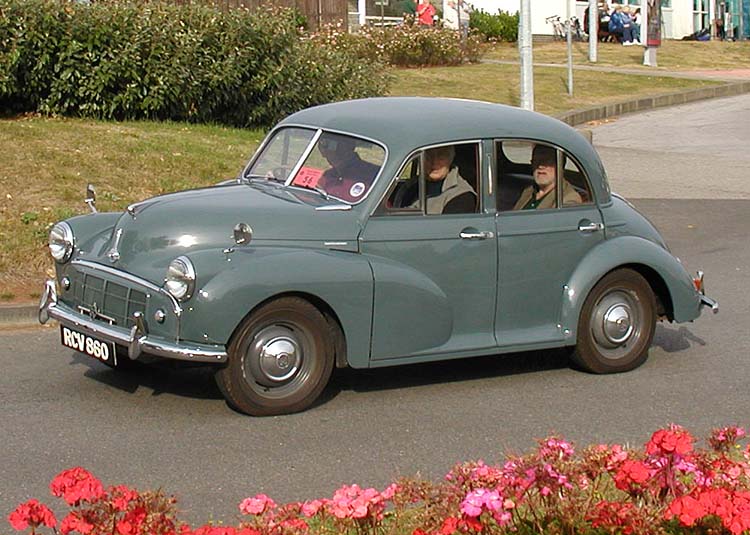 Automobile design finally emerged from the shadow of World War II in 1949, the year that in the United States saw the introduction of high-compression V8 engines and modern bodies from General Motors' Oldsmobile and Cadillac brands. The unibody/strut-suspended 1951 Ford Consul joined the 1948 Morris Minor and 1949 Rover P4 in waking up the automobile market in the United Kingdom. In Italy, Enzo Ferrari was beginning his 250 series, just as Lancia introduced the revolutionary V6-powered Aurelia.
Automobile design finally emerged from the shadow of World War II in 1949, the year that in the United States saw the introduction of high-compression V8 engines and modern bodies from General Motors' Oldsmobile and Cadillac brands. The unibody/strut-suspended 1951 Ford Consul joined the 1948 Morris Minor and 1949 Rover P4 in waking up the automobile market in the United Kingdom. In Italy, Enzo Ferrari was beginning his 250 series, just as Lancia introduced the revolutionary V6-powered Aurelia.
Throughout the 1950s, engine power and vehicle speeds rose, designs became more integrated and artful, and cars spread across the world. Alec Issigonis' Mini and Fiat's 500 diminutive cars swept Europe, while the similar kei car class put Japan on wheels for the first time. The legendary Volkswagen Beetle survived Hitler's Germany to shake up the small-car market in the Americas. Ultra luxury, exemplified in America by the Cadillac Eldorado Brougham, reappeared after a long absence, and grand tourers (GT), like the Ferrari Americas, swept across Europe.

The market changed somewhat in the 1960s, as Detroit began to worry about foreign competition, the European makers adopted ever-higher technology, and Japan appeared as a serious car-producing nation. General Motors, Chrysler, and Ford tried radical small cars, like the GM A-bodies, but had little success. Captive imports and badge engineering swept through the US and UK as amalgamated groups like the British Motor Corporation consolidated the market. BMC's revolutionary space-saving Mini, which first appeared in 1959, captured large sales worldwide. Minis were marketed under the Austin and Morris names, until Mini became a marque in its own right in 1969. The trend for corporate consolidation reached Italy as niche makers like Maserati, Ferrari, and Lancia were acquired by larger companies. By the end of the decade, the number of automobile marques had been greatly reduced.
In America, performance became a prime focus of marketing, exemplified by pony cars and muscle cars. In 1964 the popular Ford Mustang appeared. In 1967, Chevrolet released the Camaro to compete with the Mustang. But everything changed in the 1970s as the 1973 oil crisis, automobile emissions control rules, Japanese and European imports, and stagnant innovation wreaked havoc on the American industry. Though somewhat ironically, full-size sedans staged a major comeback in the years between the energy crisis, with makes such as Cadillac and Lincoln staging their best sales years ever in the late 70s. Small performance cars from BMW, Toyota, and Nissan took the place of big-engined cars from America and Italy.

On the technology front, the biggest developments of the era were the widespread use of independent suspensions, wider application of fuel injection, and an increasing focus on safety in the design of automobiles. The hottest technologies of the 1960s were NSU's "Wankel engine", the gas turbine, and the turbocharger. Of these, only the last, pioneered by General Motors but popularised by BMW and Saab, was to see widespread use. Mazda had much success with its "Rotary" engine which, however, acquired a reputation as a polluting gas-guzzler. Other Wankel licensees, including Mercedes-Benz and General Motors, never put their designs into production after the 1973 oil crisis. (Mazda's hydrogen-fuelled successor was later to demonstrate potential as an "ultimate eco-car". Rover and Chrysler both produced experimental gas turbine cars to no effect.
Cuba is famous for retaining its pre-1959 cars, known as yank tanks or maquinas, which have been kept since the Cuban revolution when the influx of new cars slowed because of a US trade embargo.Exemplary post-war cars:
- 1948–1971 Morris Minor — a popular, and typical post-war car exported around the world.
- 1959–2000 Mini — this quintessential small car lasted for four decades, and is one of the most famous cars of all time.
- 1961–1975 Jaguar E-type — the E-type saved Jaguar on the track and in the showroom, and was a standard for design and innovation in the 1960s.
- 1964–present Ford Mustang — the pony car that became one of the best-selling and most-collected cars of the era.
- 1969 Datsun 240Z — one of the first Japanese sports cars to be a smash hit with the North American public, it paved the way for future decades of Japanese strength in the automotive industry. It was affordable, well built, and had great success both on the track and in the showroom.
0 comments:
Post a Comment